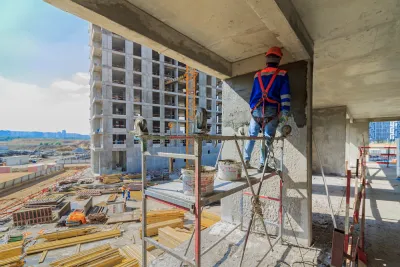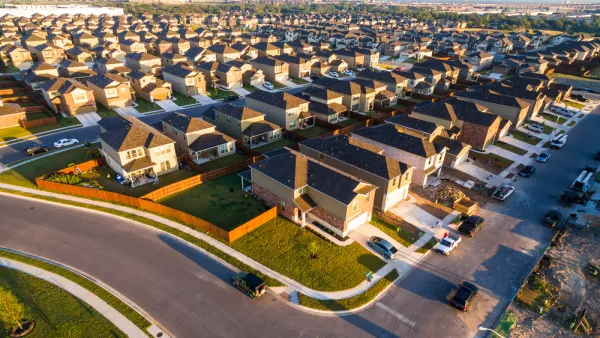Zoning and the economy aren't the only factors in neighborhood change—financial regulations and policies, sometimes seemingly unrelated, also have an effect.

Michael Reher writes to reveal an underappreciated factor in the rental housing affordability crisis in the United States: changing financing practices.
According to the findings of Reher's new working paper, "much of the growth in apartment improvements, the rise in rents, and the loss of low-income units were the result of a change in bank regulations and the interplay between low-interest rates and the rules that govern underfunded public pension funds."
With renovations, for instance, Reher traces the increase in residential improvements with multiple changes that funneled funding for renovations away from other kinds of residential investments.
The first is High Volatility Commercial Real Estate (HVCRE) bank capital requirements introduced in 2015 in accordance with the requirements of the 2010 Dodd-Frank Wall Street Improvement and Consumer Protection Act. These regulations, which were supposed to make the financial system more stable by requiring banks to have greater reserves for riskier loans, categorized loans secured by improvements on rental properties as significantly less risky than loans for the construction of new rental units.
Reher provides this summary of the paper's findings to conclude a more detailed article:
Collectively, my findings indicate that the regulatory changes and the changes made by public pension fund managers together accounted for around one-third of real improvement activity over 2010-2016. During this period, quality improvements accounted for 65 percent of rent growth (though this number includes improvements not necessarily created by the previous two shifts).
FULL STORY: HAVE CHANGES IN FINANCING CONTRIBUTED TO THE LOSS OF LOW-COST RENTAL UNITS AND RENT INCREASES?

National Parks Layoffs Will Cause Communities to Lose Billions
Thousands of essential park workers were laid off this week, just before the busy spring break season.

Retro-silient?: America’s First “Eco-burb,” The Woodlands Turns 50
A master-planned community north of Houston offers lessons on green infrastructure and resilient design, but falls short of its founder’s lofty affordability and walkability goals.

Delivering for America Plan Will Downgrade Mail Service in at Least 49.5 Percent of Zip Codes
Republican and Democrat lawmakers criticize the plan for its disproportionate negative impact on rural communities.

Test News Post 1
This is a summary

Test News Headline 46
Test for the image on the front page.

Balancing Bombs and Butterflies: How the National Guard Protects a Rare Species
The National Guard at Fort Indiantown Gap uses GIS technology and land management strategies to balance military training with conservation efforts, ensuring the survival of the rare eastern regal fritillary butterfly.
Urban Design for Planners 1: Software Tools
This six-course series explores essential urban design concepts using open source software and equips planners with the tools they need to participate fully in the urban design process.
Planning for Universal Design
Learn the tools for implementing Universal Design in planning regulations.
EMC Planning Group, Inc.
Planetizen
Planetizen
Mpact (formerly Rail~Volution)
Great Falls Development Authority, Inc.
HUDs Office of Policy Development and Research
NYU Wagner Graduate School of Public Service





























